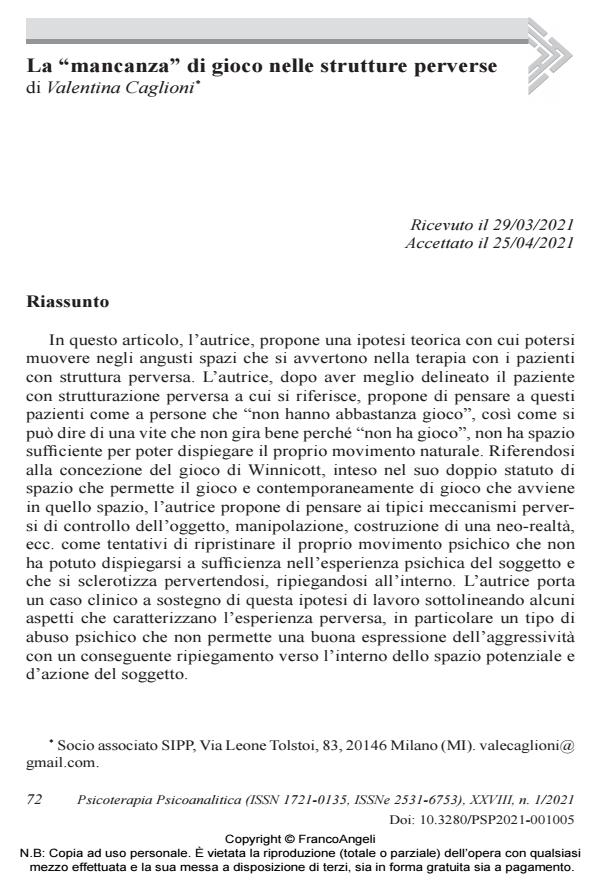The lack of play in perverse structures
Journal title PSICOTERAPIA PSICOANALITICA
Author/s Valentina Caglioni
Publishing Year 2021 Issue 2021/1
Language Italian Pages 19 P. 72-90 File size 192 KB
DOI 10.3280/PSP2021-001005
DOI is like a bar code for intellectual property: to have more infomation
click here
Below, you can see the article first page
If you want to buy this article in PDF format, you can do it, following the instructions to buy download credits

FrancoAngeli is member of Publishers International Linking Association, Inc (PILA), a not-for-profit association which run the CrossRef service enabling links to and from online scholarly content.
In this work the author suggests a theoretical hypotesis that could help in managing the tight spaces in the therapy field with perverse structured subjects. The author, after having defined to which kind of perverse structures she refers, suggests to think to these patients as if they don’t have "playing space", like a screw that can’t work because it cannot unfold its natural dynamic. Referring to Winnicott playing theory, in its double meaning of space that allow you to play and at the same time of the game that take place in that space, the author suggests to think about typical perverse mechanisms of objects control, manipulation, construction of a new-reality, etc., as an effort to restore the subject’s own psychic dynamic that couldn’t be expressed enough and that sclerotized perverting itself, folding inside. The author supports her hypothesis by describing a clinical situation and focus on some aspects of perversion experience such as a kind of psychic abuse that inhibits aggressiveness with the consequence of the subject’s potencial space and his action folding inside.
Keywords: perversion functioning, playing, abuse, potential space, aggressive aim, perversion games.
Valentina Caglioni, La "mancanza" di gioco nelle strutture perverse in "PSICOTERAPIA PSICOANALITICA" 1/2021, pp 72-90, DOI: 10.3280/PSP2021-001005